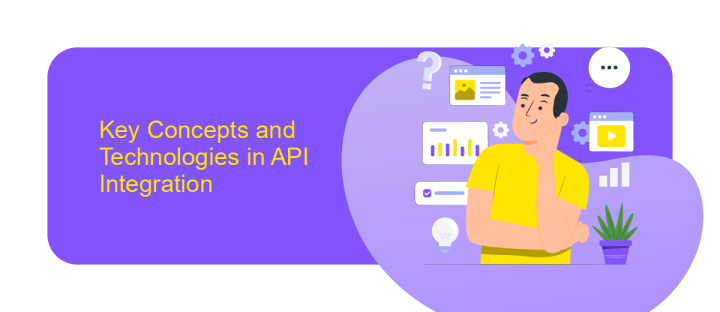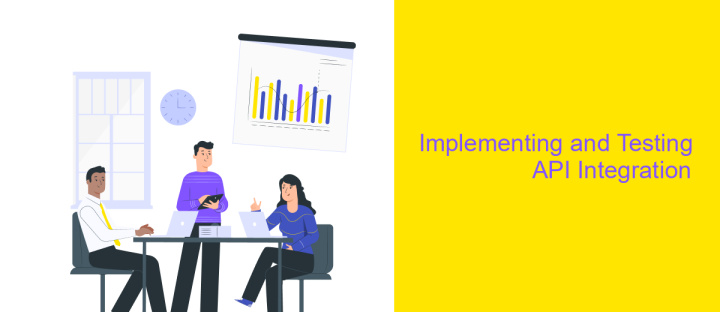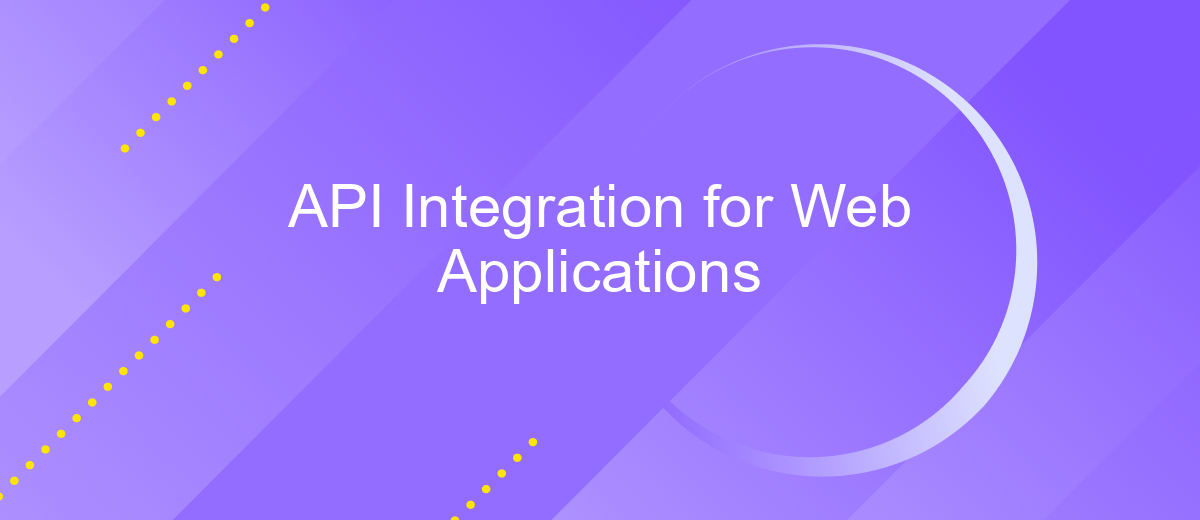API Integration for Web Applications
In today's rapidly evolving digital landscape, API integration has become a cornerstone for enhancing web applications. By seamlessly connecting diverse systems and services, APIs enable developers to create more dynamic, efficient, and scalable solutions. This article explores the significance of API integration, its benefits for web applications, and key considerations for developers aiming to harness its full potential to deliver enhanced user experiences and streamlined operations.
Understanding API Integration and its Benefits
API integration is a crucial component in modern web applications, enabling disparate systems to communicate and share data seamlessly. By leveraging APIs, developers can enhance functionality, streamline operations, and improve user experience without reinventing the wheel. APIs serve as bridges between different software systems, allowing them to work together efficiently and effectively.
- Enhanced Functionality: APIs allow web applications to access additional features and services from third-party providers.
- Time and Cost Efficiency: By utilizing existing APIs, developers can save time and resources, reducing the need for building features from scratch.
- Scalability: APIs enable applications to scale more easily by integrating new services and technologies as needed.
- Improved User Experience: APIs facilitate smoother and more responsive interactions within applications, enhancing user satisfaction.
Understanding and effectively implementing API integration can significantly boost the capabilities and competitiveness of web applications. By connecting different systems and services, APIs not only streamline development processes but also open up opportunities for innovation and growth. As businesses increasingly rely on digital solutions, mastering API integration becomes an essential skill for developers aiming to create robust and dynamic web applications.
Key Concepts and Technologies in API Integration

API integration is a crucial aspect of modern web applications, enabling disparate systems to communicate and share data seamlessly. At its core, API integration involves connecting different software components, allowing them to function as a cohesive unit. This process typically involves RESTful APIs, which use standard HTTP methods and are known for their scalability and simplicity. Additionally, SOAP APIs, though more complex, offer robust security features, making them suitable for enterprise-level applications. Understanding these fundamental API types is essential for developers aiming to build efficient and reliable web applications.
To streamline the integration process, various tools and platforms, such as ApiX-Drive, offer automated solutions that simplify the connection between different applications. ApiX-Drive, for example, provides a user-friendly interface and pre-built connectors, enabling even those with minimal technical expertise to set up integrations quickly. By leveraging such technologies, businesses can reduce development time, minimize errors, and enhance overall productivity. In summary, mastering API integration concepts and utilizing the right technologies are vital for developing web applications that are both dynamic and interconnected.
Planning and Designing Your API Integration

Effective planning and designing of your API integration are crucial for ensuring seamless communication between web applications. Start by clearly defining the objectives of your integration. Understand the specific functionalities you aim to achieve and identify the APIs that best align with these goals. This foundational step will guide your development process and help in setting realistic timelines and resource allocations.
- Research and select suitable APIs that meet your requirements.
- Analyze the documentation of chosen APIs to comprehend their capabilities and limitations.
- Plan your data handling strategy, focusing on security and efficiency.
- Design error-handling procedures to manage potential integration issues.
- Establish testing protocols to ensure reliable performance before deployment.
Once you have a solid plan, proceed with designing the architecture of your integration. Consider scalability, as your application’s needs may grow over time. Ensure that your design accommodates future enhancements without significant overhauls. By meticulously planning and designing your API integration, you lay the groundwork for a robust, efficient, and scalable web application that can adapt to evolving technological landscapes.
Implementing and Testing API Integration

Implementing API integration in web applications involves connecting your application with external services to enhance functionality. Begin by identifying the API endpoints and understanding the documentation provided by the API provider. This ensures that you know the required parameters, authentication methods, and data formats.
Once you've understood the API specifications, proceed to write the integration code. Use libraries or frameworks that simplify HTTP requests, such as Axios or Fetch in JavaScript. Handle errors gracefully and ensure that your application can manage unexpected responses or downtime from the API.
- Review API documentation thoroughly.
- Set up authentication and authorization.
- Write functions to handle API requests and responses.
- Implement error handling and logging mechanisms.
- Test the integration using tools like Postman or curl.
Testing is a crucial step in API integration. Use unit tests to verify that your code correctly handles API responses. Simulate different scenarios, such as network failures or invalid data, to ensure robustness. By thoroughly testing, you can identify potential issues early and provide a seamless experience for users.
Maintaining and Optimizing API Integrations
Regular maintenance of API integrations is crucial for ensuring seamless functionality and performance of web applications. This involves monitoring API performance metrics, such as response times and error rates, to identify potential issues before they escalate. Regularly updating API documentation and ensuring compatibility with the latest versions of integrated services also play a pivotal role in maintaining robust integrations. By setting up automated alerts and monitoring systems, developers can quickly respond to any anomalies, minimizing downtime and maintaining user satisfaction.
Optimizing API integrations goes beyond maintenance; it involves enhancing efficiency and scalability. Utilizing tools like ApiX-Drive can streamline the process of connecting various applications, reducing manual effort and improving data flow. ApiX-Drive offers intuitive automation features that allow for seamless data synchronization across platforms, helping developers focus on core application functionalities. By optimizing API calls and reducing unnecessary data transfers, developers can improve application speed and responsiveness, ultimately delivering a superior user experience.
FAQ
What is API integration in web applications?
Why is API integration important for web applications?
How can I ensure secure API integration?
What are common challenges in API integration?
Are there tools to simplify API integration for web applications?
Time is the most valuable resource in today's business realities. By eliminating the routine from work processes, you will get more opportunities to implement the most daring plans and ideas. Choose – you can continue to waste time, money and nerves on inefficient solutions, or you can use ApiX-Drive, automating work processes and achieving results with minimal investment of money, effort and human resources.

